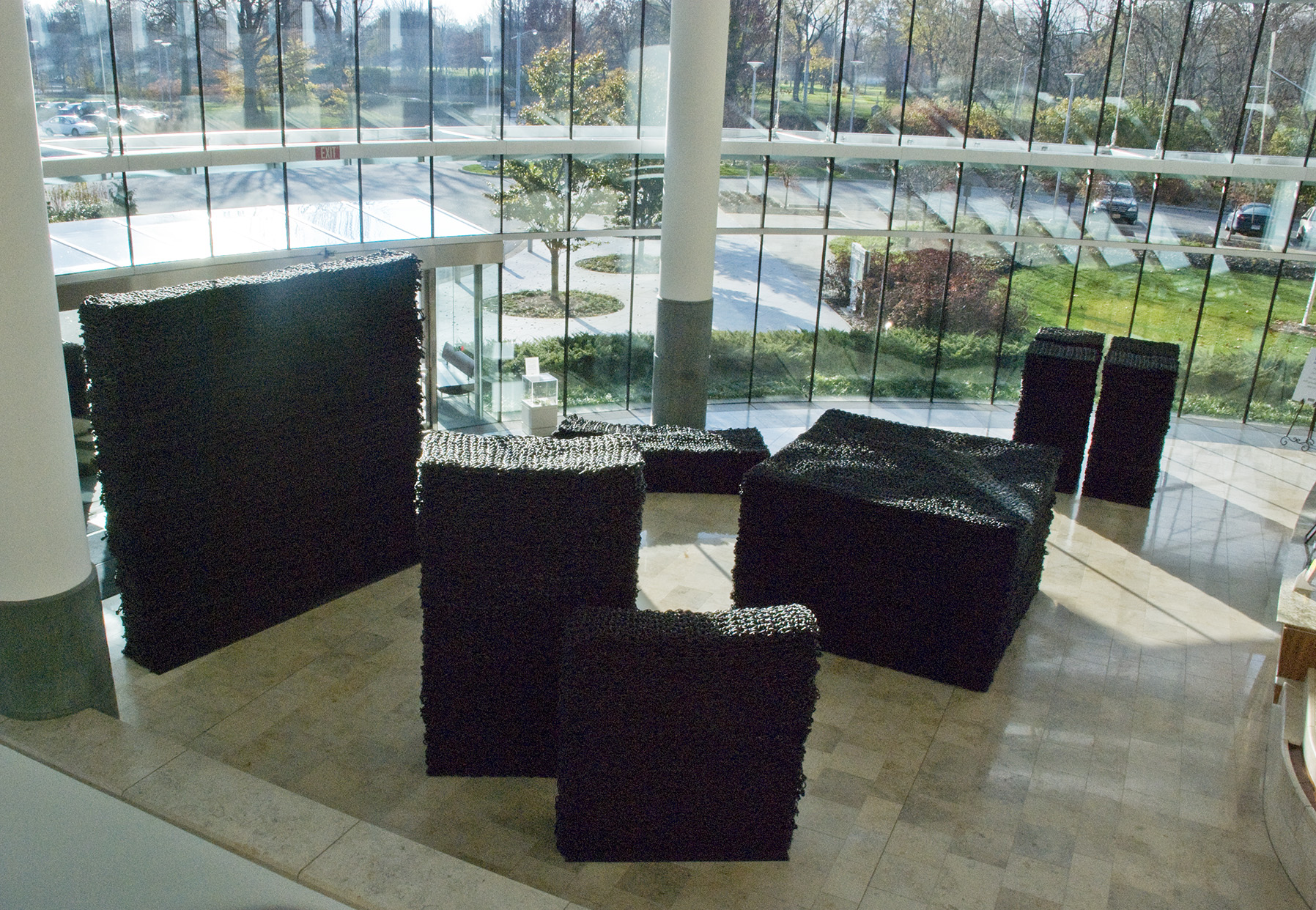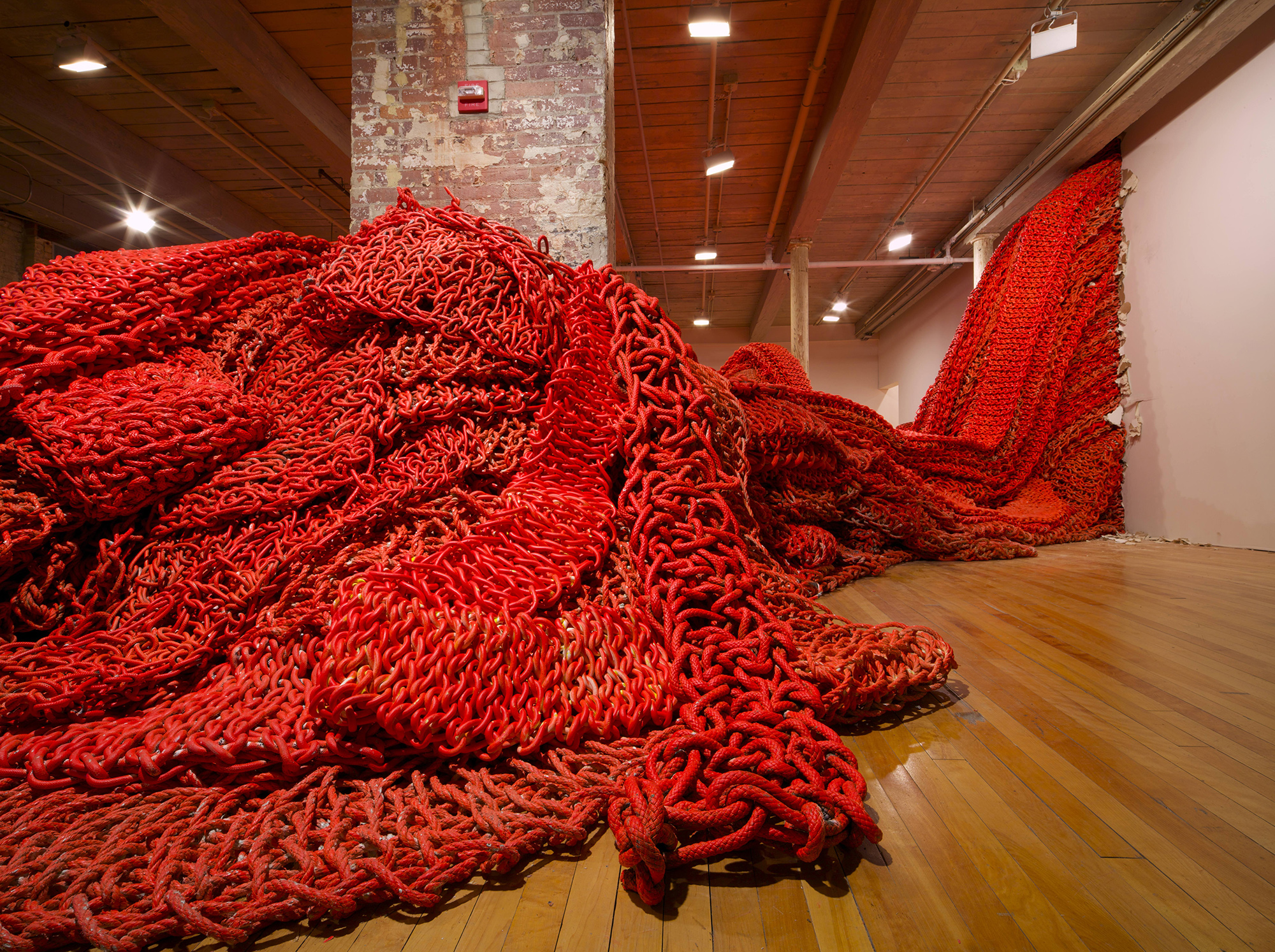Orly Genger / interview



[Kwon] <Big Boss>, the most recent project currently exhibited at the Massachusetts Museum of Contemporary Art, seems to be integrated with all the ideas and the techniques you have developed in your previous works. Please tell us about the process of the project from its conception to the installation.
[Genger] <Big Boss> is made out of rope that I hand-knot and paint. Essentially, it is comprised of two parts that form a single whole. The first part is a wall that runs from floor to ceiling and running side to side made of hundreds of layers of knotted rope. At one end, the wall gives way to an opening that lets the material pour into the next room, creating an amorphous environment where the material takes over, creating an overwhelming landscape.
I see the first room as a kind of contained object: something that we stand by and look at and that is very separate from us. And then the second room is something that very much involves us—we have to decide where we stand in it. So, it deals with both aspects of how we look at art: one is that we look at art like it’s something else, on a pedestal; the other room is something we become part of and we know it because we are in it. These are two different ways of understanding sculpture. I have been dealing with both separately. This is the first time I am combining them in one sculpture.
[Kwon] Among those who work with repetitive processes, some Asian artists may embody a certain spiritual connotation of asceticism in their works. How do you see your labor-intensive working process?
[Genger] The labor intensiveness is crucial to my process. It’s crucial to my everyday. I feel there is a deep connection between labor and creation.
[Kwon] Can you describe the notion of physicality on your work?
[Genger] The physicality has become a huge part of the work. Good work can only come from work, even from bad work. Knotting the rope is an intense physical act. Sometimes I feel like I am wrestling an octopus. I knot thick cables of rope, for <Big Boss> some were longer than 40 feet, lay them out on my studio floor and then paint them with a large sprayer. After painting both sides I begin to layer the pieces to create mass and walls.
I am interested in the “relationship” that grows between an artist and material. Often I see it as a wrestling match. But sometimes it’s a dance. I try to work against the material and it is natural tendencies but also in concert with it to expose its nature.
[Kwon] There must be numerous ways to knot and various kinds of ropes to use. I'm curious how the materials and methods used in your works have evolved.
[Genger] There are very subtle variation that I have worked with over the years. For the most part the knot has stayed the same. It’s the overall form that has evolved. The knot is just a brick in the building.
[Kwon] Critics often review your works in relation to minimalism, especially due its form. Tell us how minimalism influenced you and/or your works. In addition, please explain your last year’s performance, <I’ll Never Lie to You Again, I Promise>.
[Genger] I am attracted to minimalism but also believe that it is some sort of aesthetic prison. I’m fascinated and bored by the many large steel minimal sculptures made in the 60’s and 70’s. There was a great deal of labor that went into not revealing the hand of the artist. In my performance I am challenging this minimalist cube and the organic nature that is within it.
Orly Genger was born (1979) and raised in New York City. She studied fine art at Brown University and The School of the Art Institute of Chicago. She currently shows with Larissa Goldston Gallery in New York. She has had solo exhibitions including Whole, Indianapolis Museum of Art, Indianapolis (2008); MASSPEAK, Larissa Goldston Gallery, New York (2007); The Aldrich Contemporary Arts Museum, Ridgefield, CT (2005). Her work is included in several collections such as the Museum of Modern Art, Hood Museum, and Indianapolis Museum of Art. Her work has been reviewed in many publications including The New York Times, The Washington Post, and The Village Voice.
Image Courtesy of Orly Genger and Larissa Goldston Gallery
This interview was published in bob Magazine Vol. 74 (September 2010) pp. 130-135
